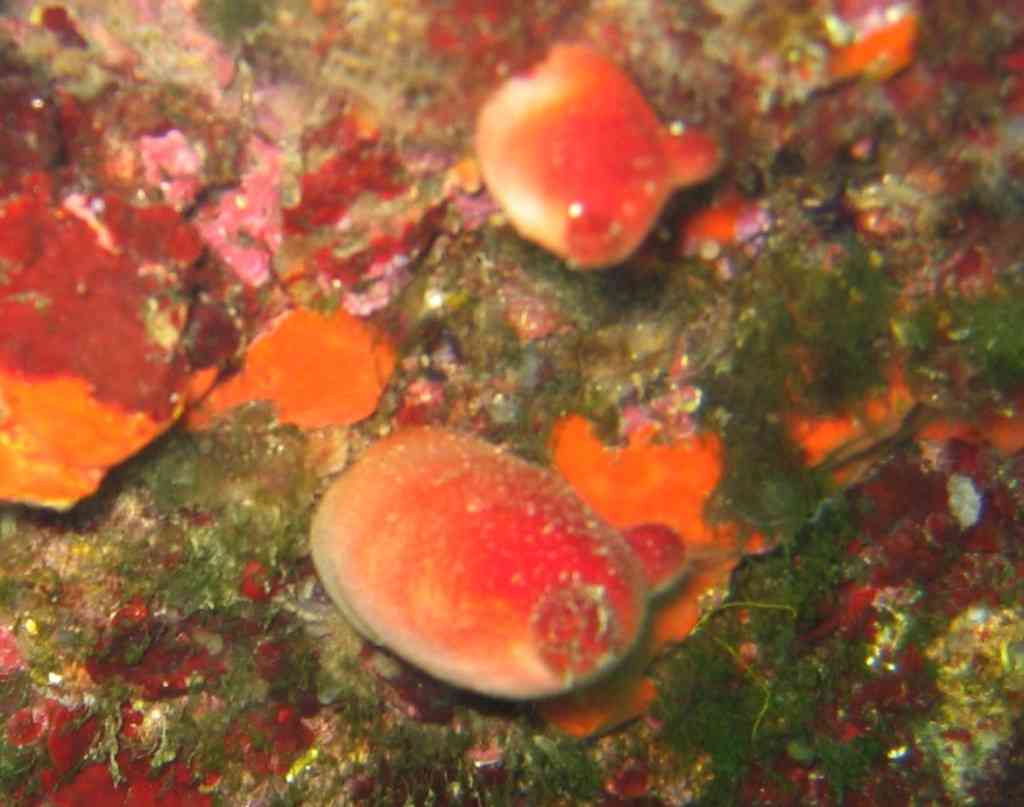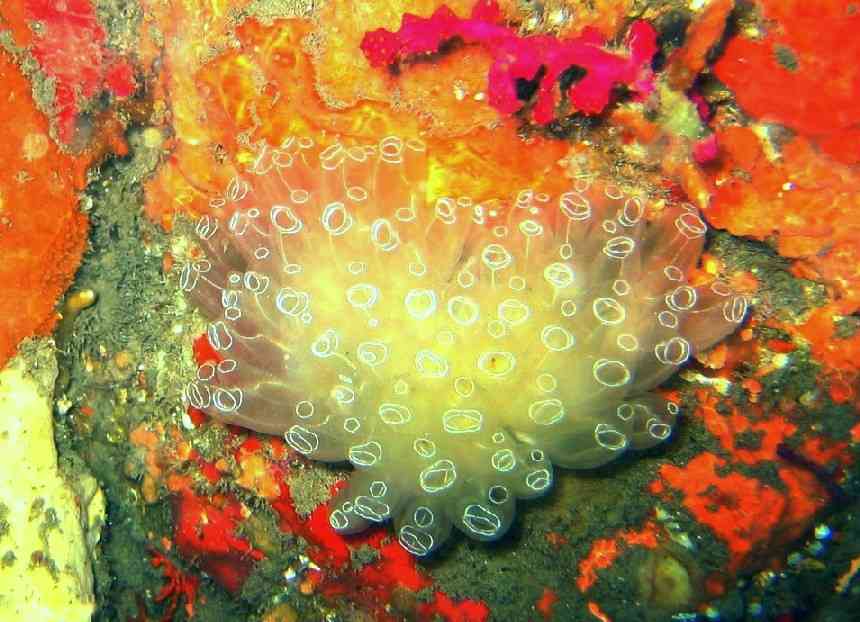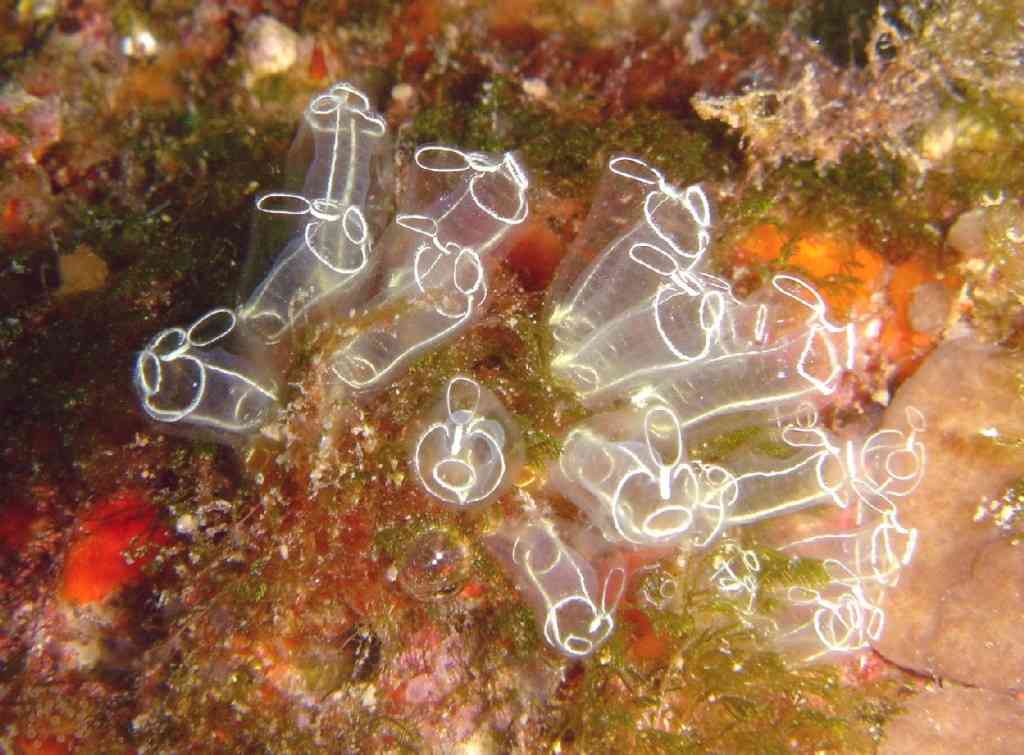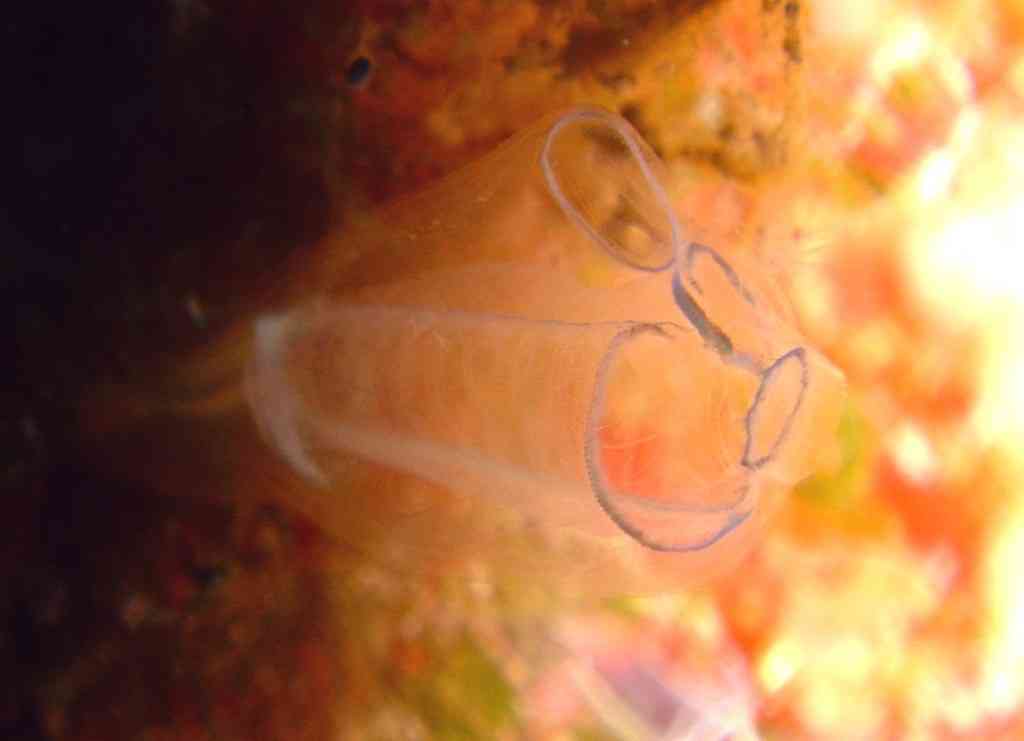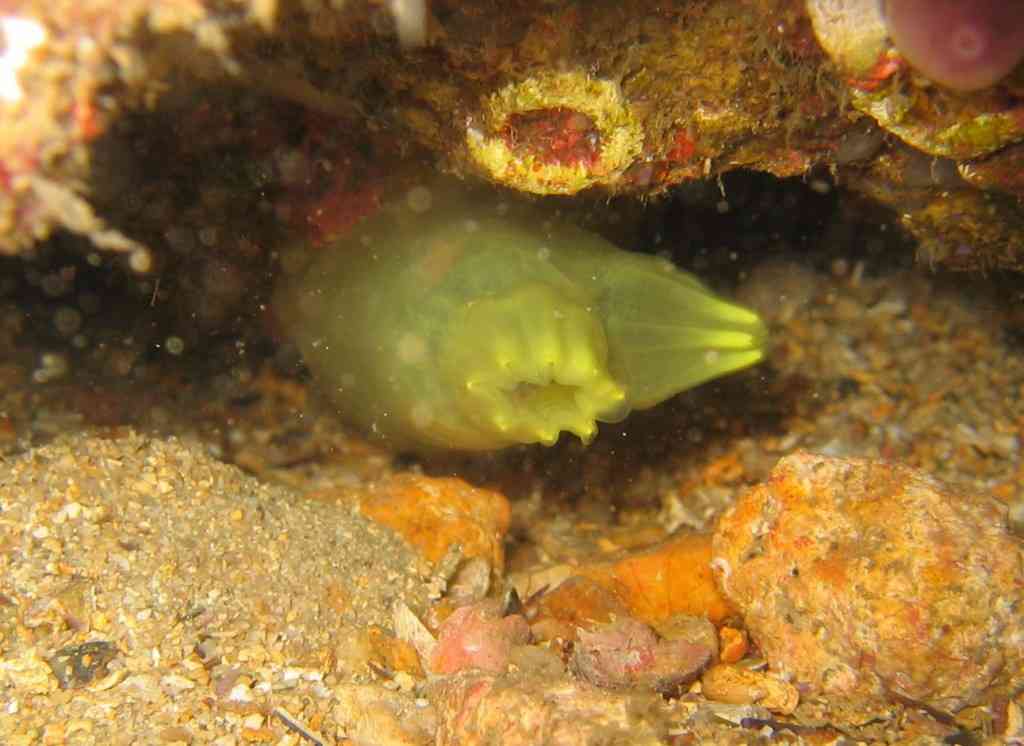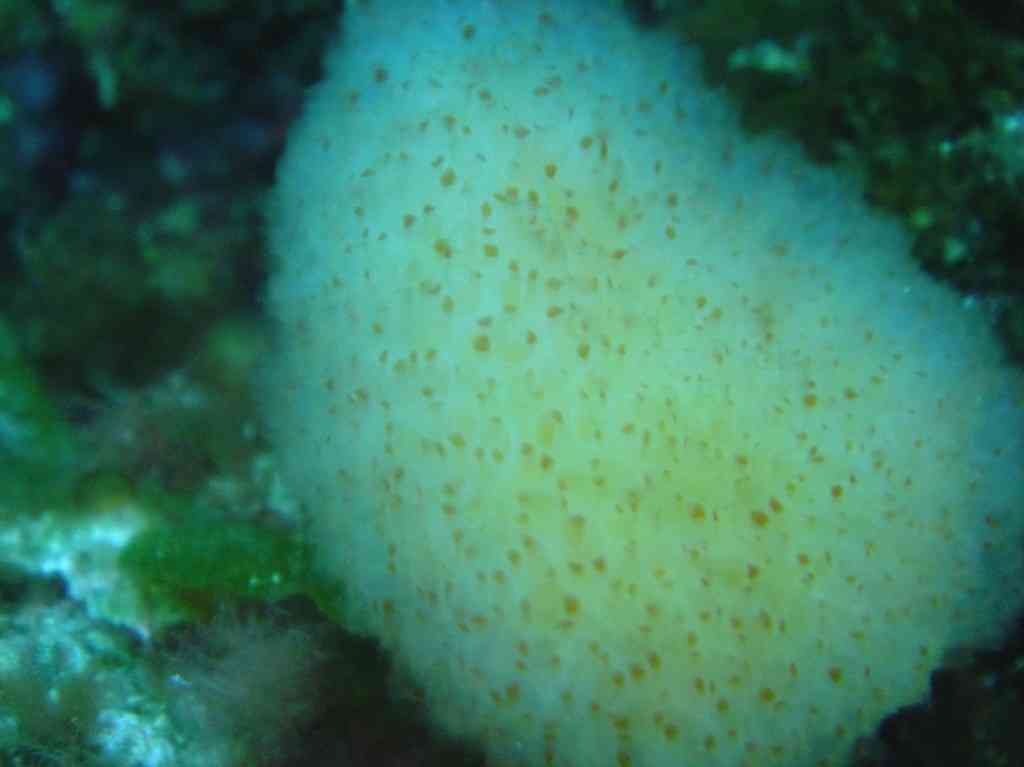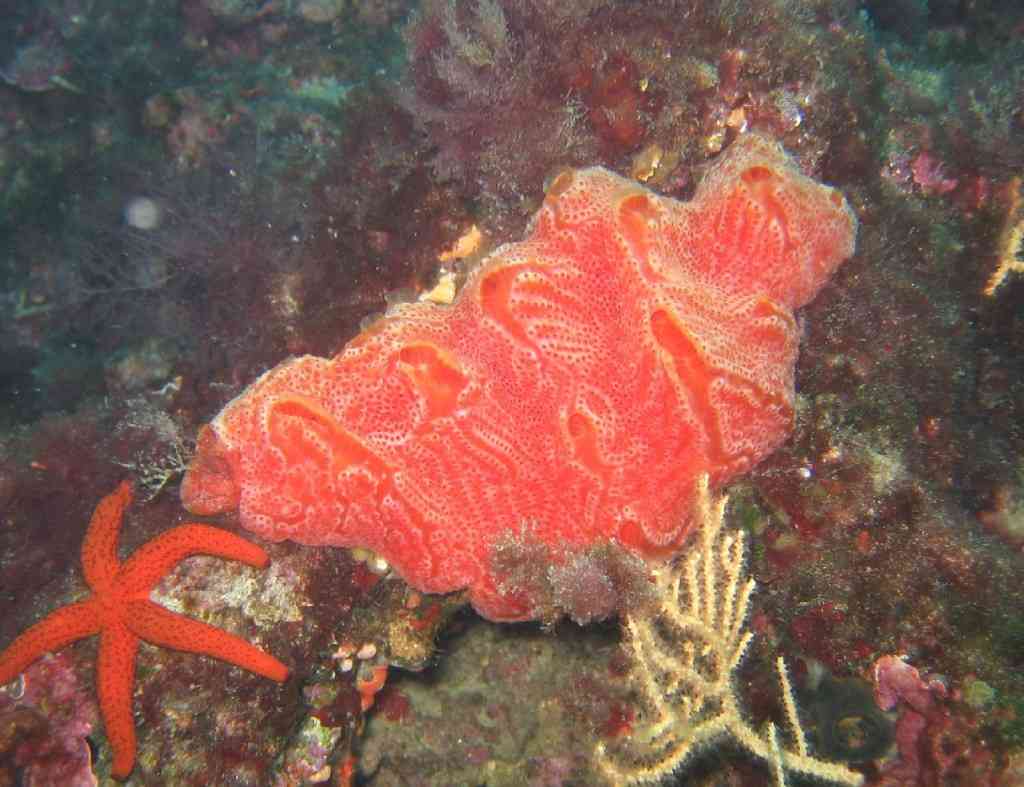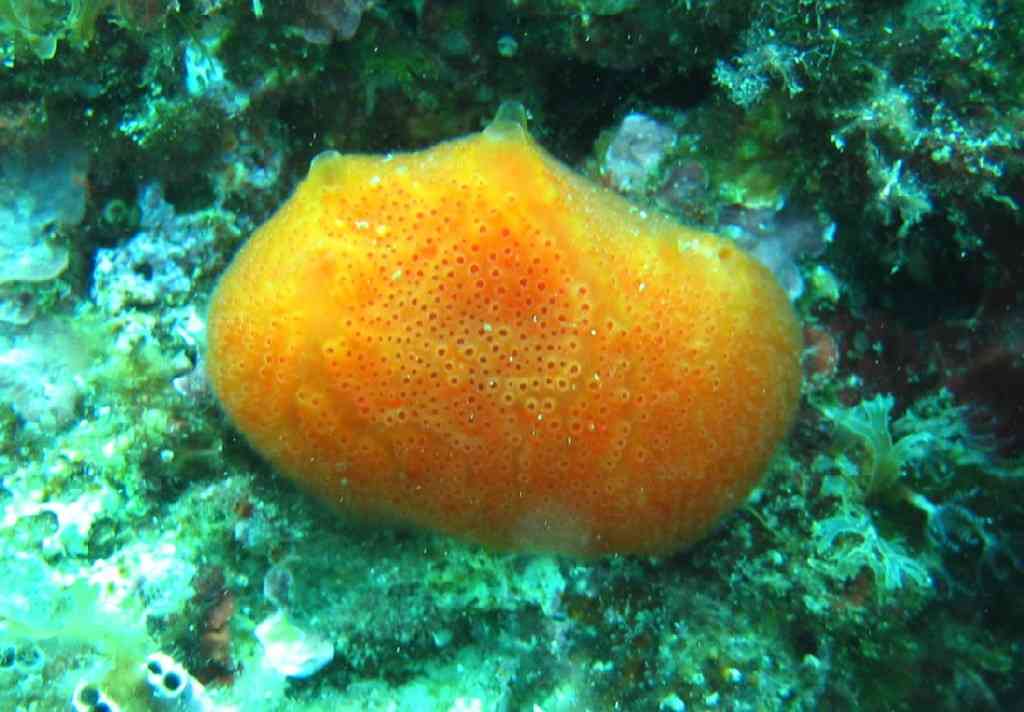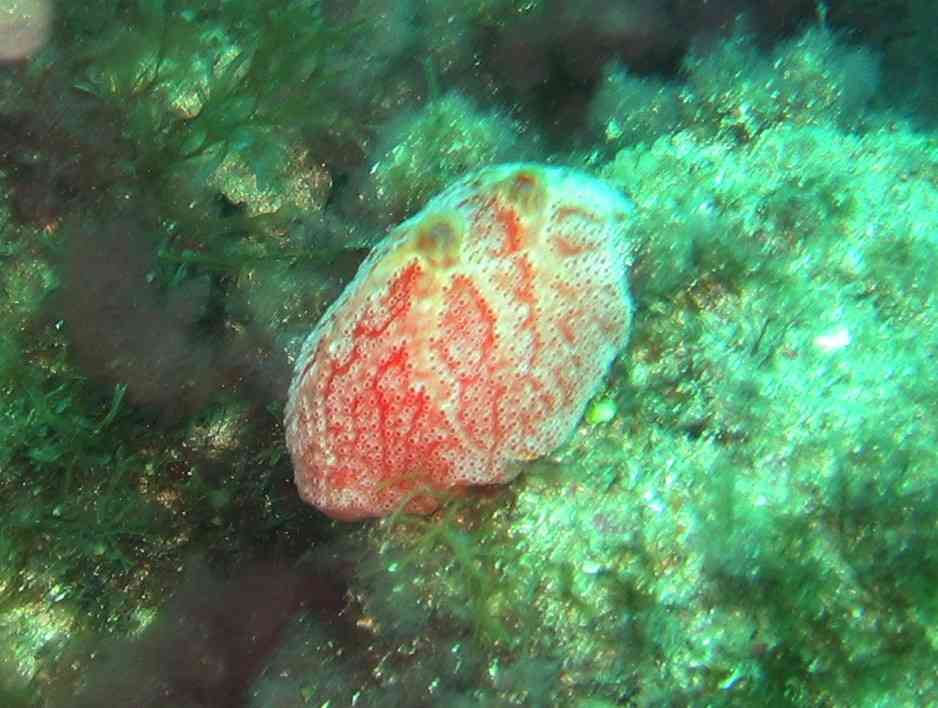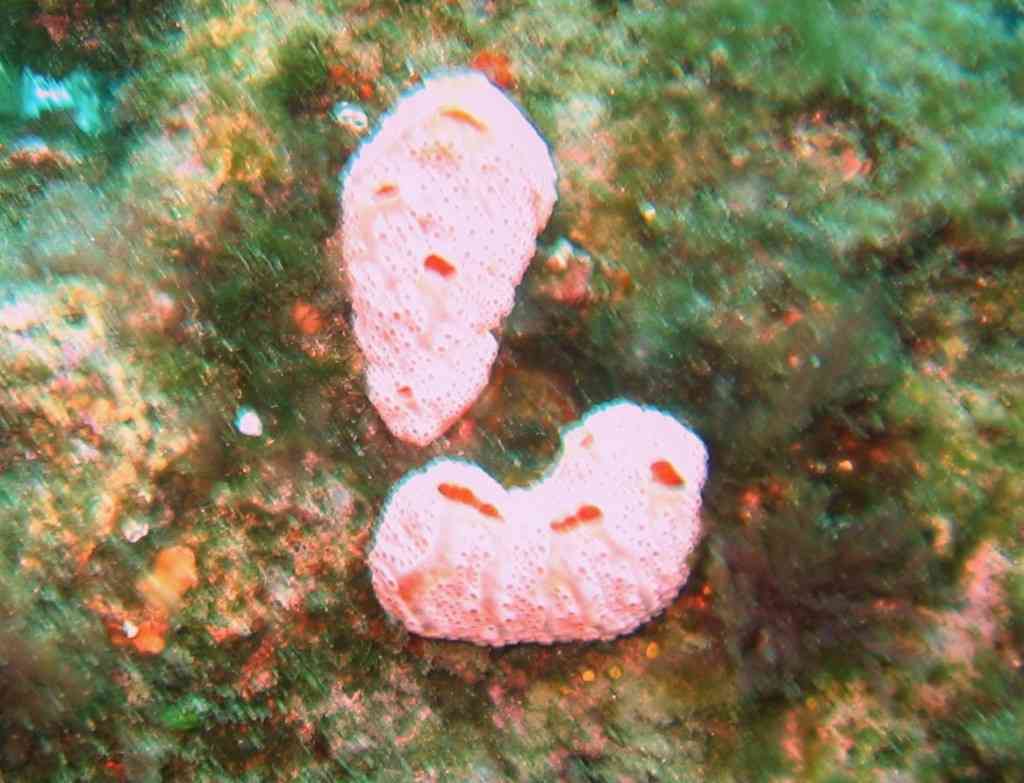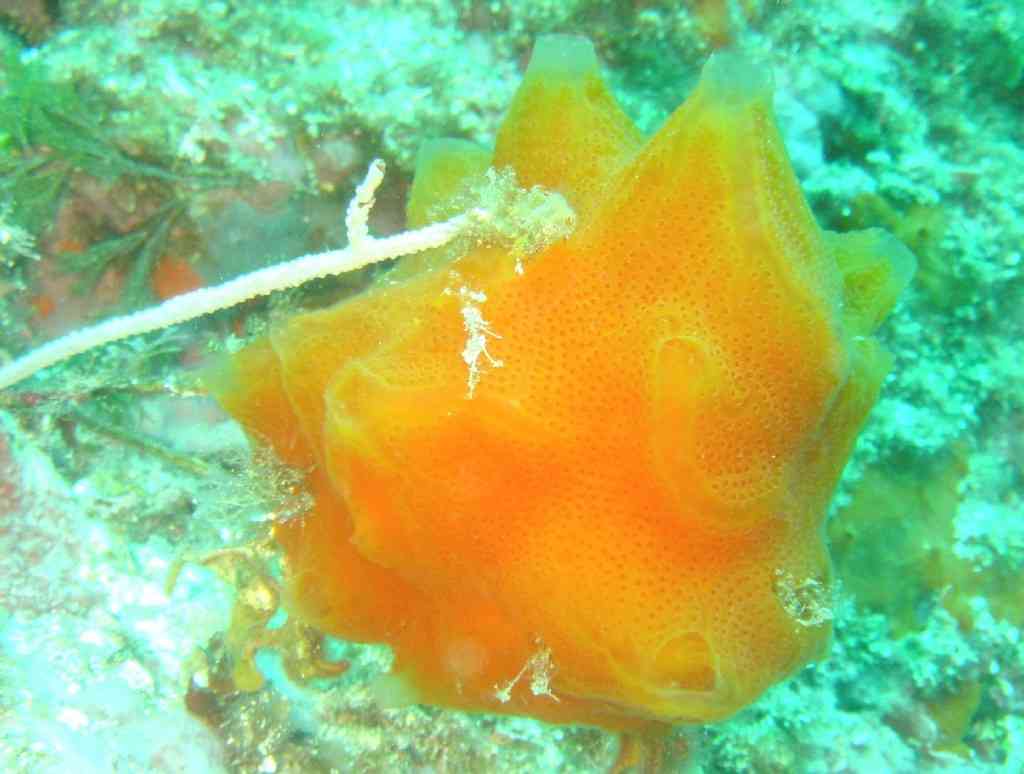The Ascidians
Number : 1300 species listed.
Characteristics Synonym, ' tunicates ': more or less rigid tunic consisting in part of chitin and Cellulose (tunicine). Most of the species, discrete, unknown to the non-diving public except the violets very difficult to observe in diving because very well camouflaged by many epibionts – they are highly appreciated by connoisseurs to raise the soup Traditional Southern
In the general case, small in addition (about 10 cm) having two opposite siphons (clubbed solitaire: Red clubbed), or carpet encroûtant small repeated elements, arranged in star on algae, abandoned shells. (Colonial clubbed: tunicate).
Remarks Tunicates (Ascidians) are URochordés = ' Chorde in the tail ' but only during the larval stage during which the animal resembles a fish, ancestor of the vertebrates. Adults have little resemblance to the general anatomical organization Plan of Chordees. Attention, the ' chorde ' of the larvae is not segmented, it disappears in the adult stage when the tadpole loses it after having attached itself to the substrate.
Especially adaptationsÈRes : Rapid filtering of water for nutrition and respiration, presence of many lashes in motion on a kind of toasting. Throughput: A clean volume per second on average. No apparent external movement apart from occasional quick and unpredictable closures and openings of the incoming siphon to expel particles that are too large, spitting energetically.
usaEcology: All seas, all biotopes, all depths.
Danger : No danger to the diver
Trophic relations : Plankton, Zoo and Phyto Filterers. Few predators.
Reproduction: Sexual and, surprise, asexual!
Bisexual with possible self-fertilization. The solitary species are oviparous, the eggs are fertilized on the outside. Most of the established colonial species are viviparous and release swimmer larvae fixed after qlq minutes or qlq hours, followed by a very peculiar metamorphosis: tail loss, body flipping, opening of the siphons.
Asexual Reproduction: Budding of the runners, the individuals are gathered in Tufts (Claveline). Budding of adults: formation of colonies (sea Strawberry).
usaEvolution : Asexual reproduction a little surprising for
A group so close to vertebrates:
Zoologists see him as the group
of invertebrates (more evolved than the
Crabs or octopuses).

